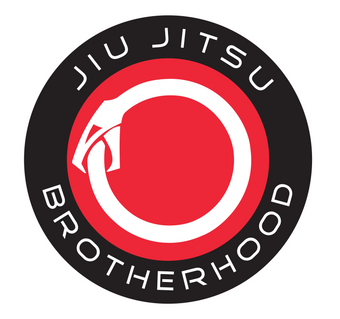Every round felt like a sprint. I'd start strong, grip everything, scramble like my life depended on it, then burn out two minutes in. The last half of the round would be survival mode. No timing. No finesse. Just exhaustion and hope.
For a long time, I chalked it up to bad cardio. I figured I needed to run more. Maybe lift harder. Maybe do hill sprints, because that’s what YouTube said. But nothing changed. I'd still gas out, even on days when I felt rested and strong.
Eventually, I started paying attention. Not to what I was doing, but to what other people weren’t doing. And I noticed something.
The black belts weren’t breathing like me.
They moved less – but more deliberately. They weren’t panting between transitions. They didn’t huff and puff through every pass. If anything, they looked almost... relaxed. Not because they weren’t working, but because they weren’t wasting anything. Especially not breath.
That’s when I started to realise it wasn’t a cardio problem. It was a breathing problem.
Breathing Isn’t Just Background Noise
Breathing seems like one of those automatic things you don’t have to think about. You’re doing it anyway, right? But in Jiu Jitsu, how you breathe is often the thing that separates calm from chaos. And in my case, effort from effectiveness.
Most beginners hold their breath without realising it. Especially during high-stress moments – escapes, transitions, even submissions. You clamp down, brace, and freeze up. Then the body kicks into fight-or-flight mode, your heart rate spikes, your hands start shaking, and suddenly it feels like you're grappling underwater.
And once you’re in that state, it’s hard to come back from. You’re no longer solving problems, you’re just reacting.
But once you start training your breath, that changes. You stop being at the mercy of the roll. You start setting the rhythm yourself.
Good Breathing Creates Good Timing
When you watch experienced grapplers roll, there's a rhythm to what they do. It’s not random. Their movement has a cadence. Their pressure has tempo. They know when to go hard and when to wait. That rhythm isn’t just about movement. It's about breathing.
Breath control gives you a metronome. It slows your mind, helps you regulate intensity, and keeps your nervous system from red-lining. And the interesting thing is: once you manage your breath, your perception of time actually changes. Things start to feel slower. You can see more. Think more. React less frantically.
Some Ways to Actually Work on This
You don’t need to overhaul your life or start a spiritual breathing practice to improve this. Here’s what’s helped me, and helped the people I coach too.
Start by noticing:
Most of us aren’t aware when we hold our breath. So start paying attention. Watch for the moments you clamp down and forget to breathe – escaping mount, defending collar chokes, finishing armbars. These are key points where people tend to go full tension. Catching that pattern is the first step.
Train the habit in flow rolls:
It’s tough to focus on breathing in full-intensity rounds. So use light rolls to build awareness. Match your breathing to your movement. Inhale while recovering guard. Exhale through transitions. The goal isn’t perfection, just consistency. It’s about tying breath to movement so that, under pressure, it’s already automatic.
Recover on purpose:
Between rounds, most people flop onto the mat or pace in silence. That’s fine, but it’s a missed opportunity. Use that time to consciously reset. Sit. Breathe through your nose. Inhale for four seconds. Exhale for six. Do that three or four times. You’ll feel your heart rate drop and your focus come back. It only takes a minute.
Use nasal breathing as a gauge:
If you can breathe through your nose during rolls, you’re probably operating at a sustainable pace. Once you’re mouth-breathing like you’re sprinting, you’re running hot. That doesn’t mean stop, but it does mean you should be aware you’re burning fuel fast.
Integrate breath into your drilling:
We drill to build muscle memory, but rarely focus on breath mechanics while doing it. Try adding that layer. Count breaths while passing. Notice when you tense up mid-drill. The goal isn’t to move more slowly, it’s to move more efficiently.
What the Gracies Knew (That Most of Us Don’t)
People talk a lot about Rickson Gracie’s breathing. The stomach control. The diaphragm isolation. The way he could control his whole body from the inside out.
That stuff looks flashy. But the deeper point is this: the Gracies saw breath as fundamental. As something you train deliberately, like takedowns or triangles. Not just as a recovery tool, but as a weapon. Something you can call on when everything else is going wrong.
And it’s not just old-school philosophy. It's performance science. The breath affects your nervous system, your awareness, and your decision-making. Ignore it, and you’ll never move past a certain level. Own it, and your whole game starts to shift.
Final Thought: Stop Holding Your Breath
We spend so much time worrying about the external details. Which guard to play. What pass to use. How to escape that one position that always gets us stuck.
But underneath all of that is the breath.
It’s always there. Always shaping how you move, think, and feel on the mat. The sooner you start treating it like a technique, not just a reflex, the sooner your Jiu Jitsu starts to feel calmer, cleaner, and more in your control.
About the author
This article was written by Tom Renshaw. Tom is a purple belt and sometime competitor with a background in education, who writes about Jiu Jitsu, mindset, and learning – always with a coffee in hand and curiosity to spare.










1 comment
Nice article.